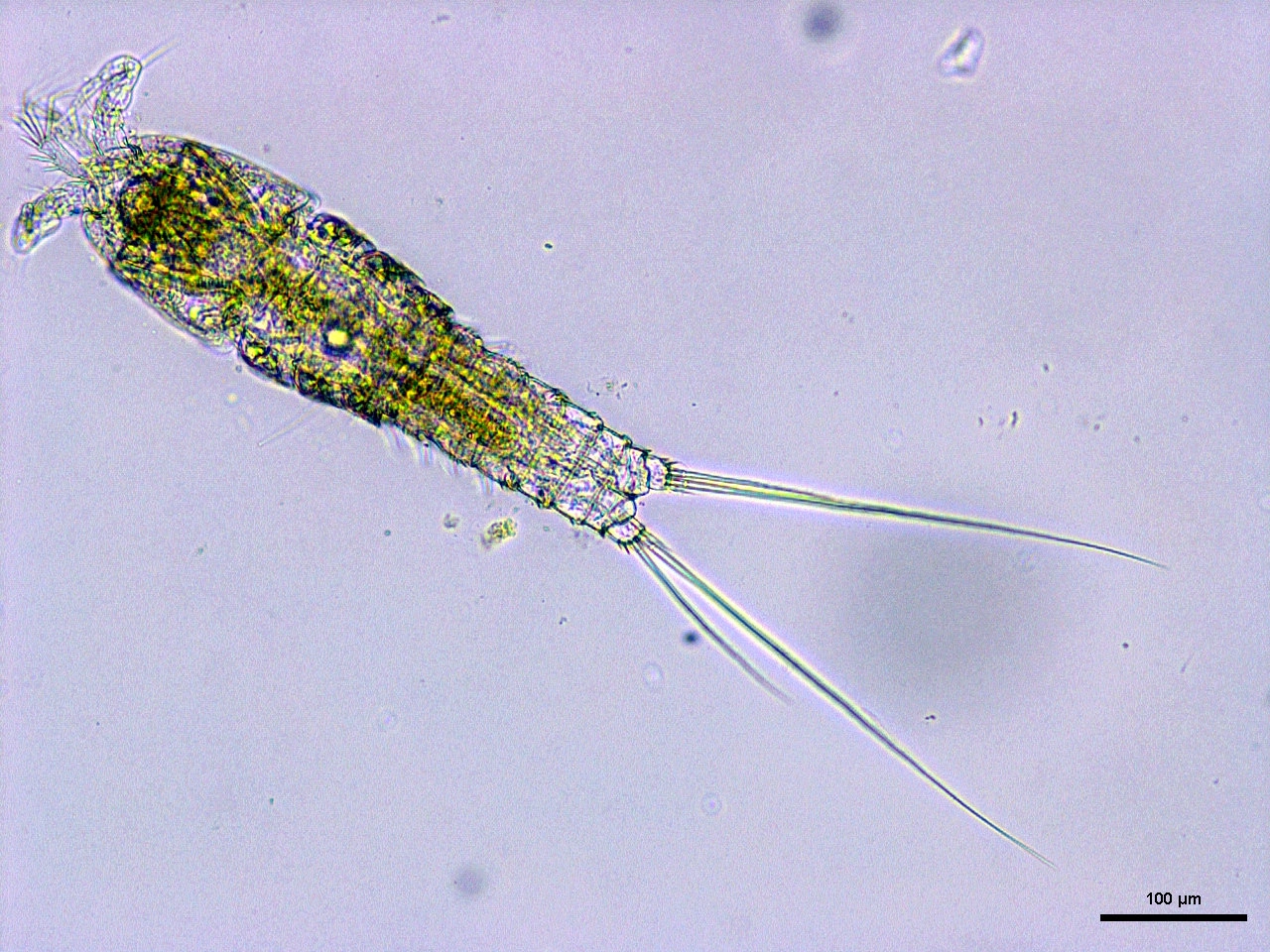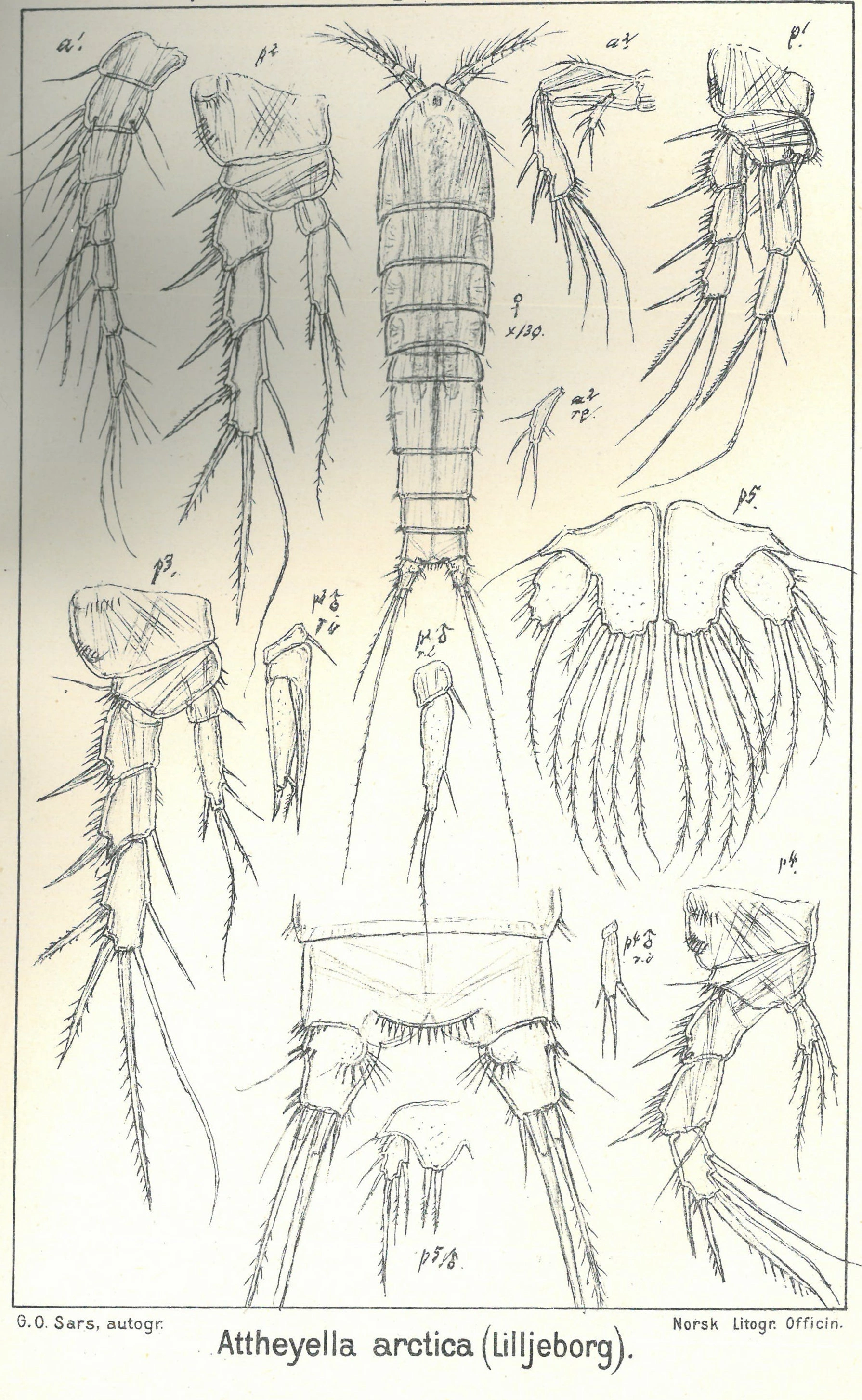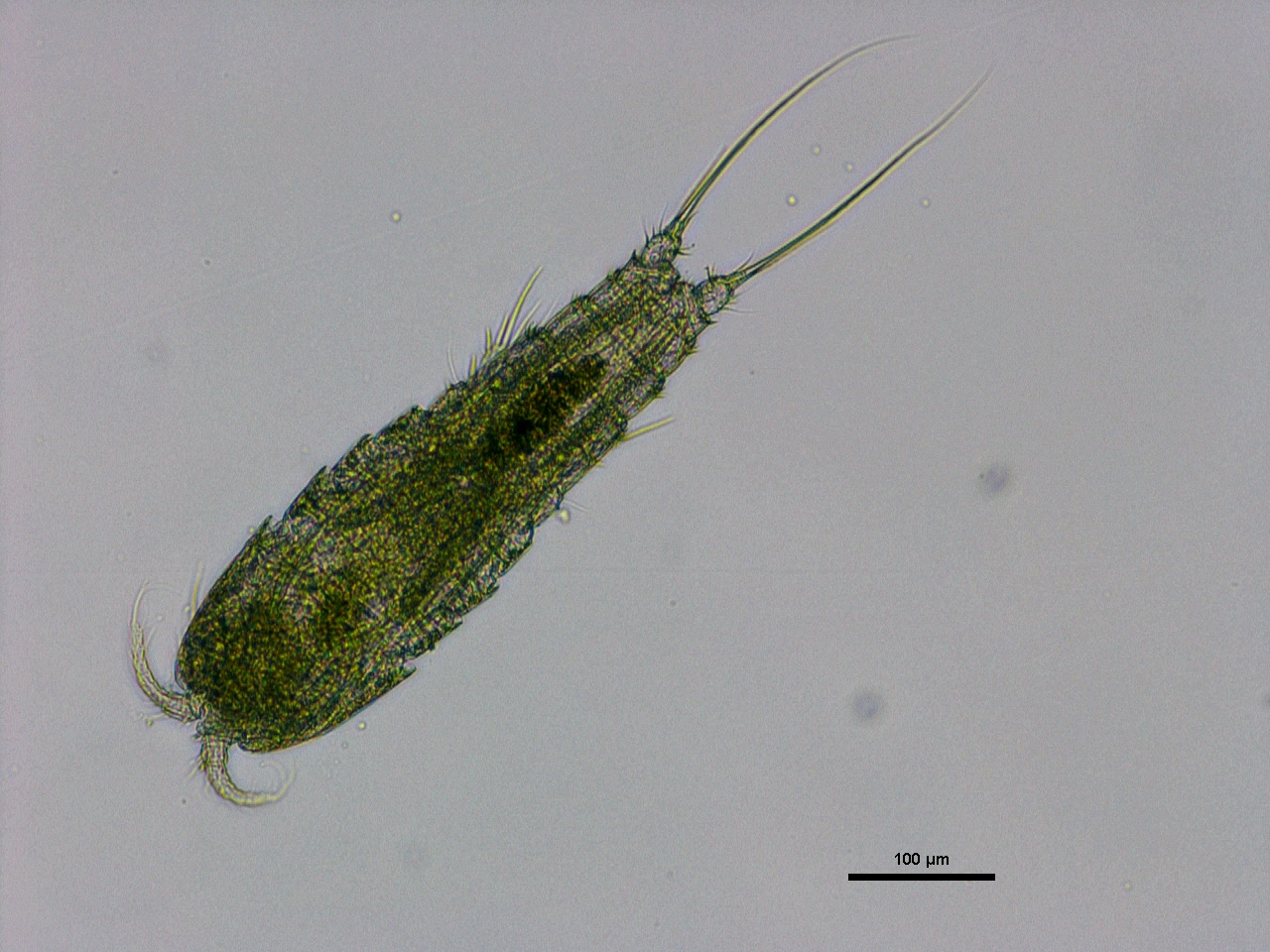Bryocamptus cuspidatus
Though Bryocamptus cuspidatus recently has been found in Norway, it has turned out to be one of the most common species.
Key characteristics
Bryocamptus cuspidatus has a variable morphology. Its body is relatively slender, having a prosome being more robust than the urosome. The exopod in the first four legs has three segments, while the endopod is 2-segmented. In the first leg, the endopod has the same length as the exopod, but for the legs 2–4, the endopod is considerably shorter than the exopod. Its rostrum is short and broad. The operculum is not prominent and has many rather small spines or teeth (about 18), while the caudal ramus is about as long as wide. In adult females, the inner terminal seta is transformed into a bent, stout, broadened base spine. The antennule consists of eight segments. The egg sac has two egg.
Female: Length 0.53–0.80 mm
Male: Length 0.40–0.60 mm
Ecology and distribution
Though Bryocamptus cuspidatus recently has been found in Norway, it has turned out to be one of the most common species. It has a Palearctic and Nearctic distribution and lives in lakes, ponds, streams, brooks, springs, mosses and groundwater. It is widespread in Arctic/mountain areas, and is less common in the lowland. The majority of records are from nutrient poor, neutral localities. Bryocamptus cuspidatus is characterized as a cold stenoterm species.


